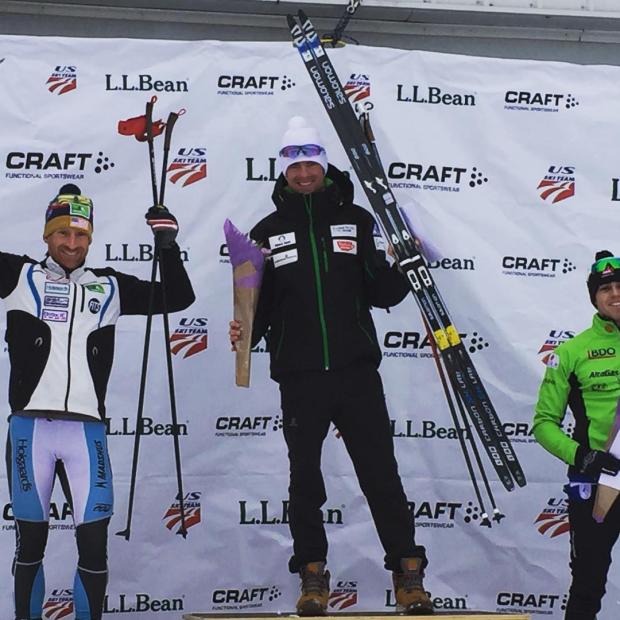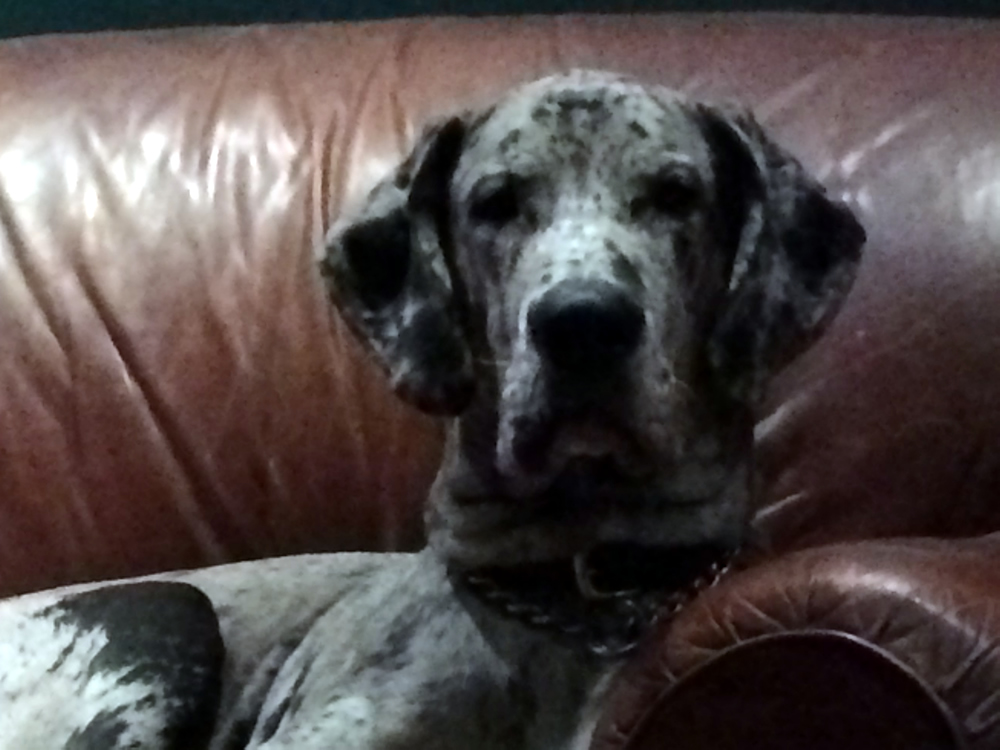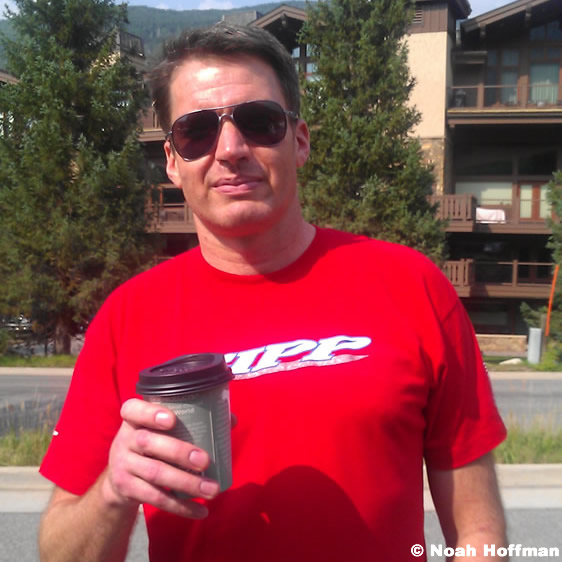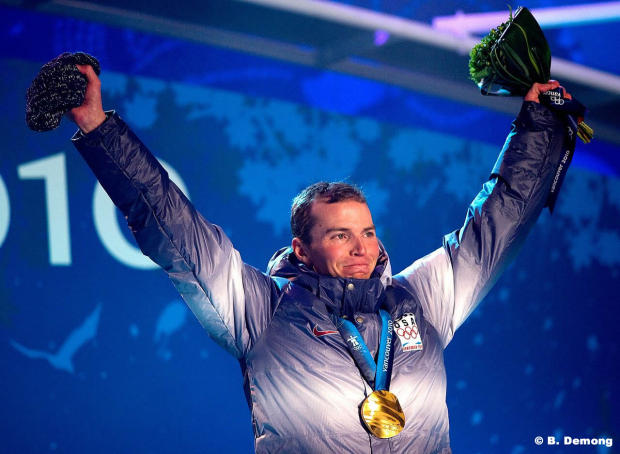Packer on Adversity and Success
Apparently no one can pick'em like Slowtwich: first professional Nordic skier Tad Elliott provided excellent insight in our stories on Why Triathletes Should Nordic Ski and How To Skate Ski, then he went on to win a National Championship. Following suit, Eric Packer was also interviewed for How To Skate Ski and then he also went on to win a national championship in Houghton, Michigan on Jan. 9. Also like Elliott, Packer had to overcome serious adversity in the form of injury on the road to his title. Packer sat down with our esteemed Winter Sports Editor, Fast Big Dog, to discuss the very interesting role of adversity in success and the fine line that can existing between every day life and catastrophe.
Slowtwitch: Congratulations on winning your first US National Championship in Nordic skiing in Houghton, Michigan on January 9 in the classic sprint. Many of our readers may not be familiar with the different racing formats in cross-country skiing, so please describe how the sprint racing format differs from individual or mass start races.
Eric Packer: Sprint races are different than distance races in that in addition to the obvious difference in distance, there isn't just one race, there are four. First, there is a qualifying round, which is run like a cycling time trial with skiers leaving the start line individually, every 15 seconds. The skiers with the top 30 times then move on to the elimination rounds, which consist of a quarter-final, semi-final and final. Sprint courses vary in distance, but they generally range from 1.2 – 1.8k. This means that if you make it to the final, it's equivalent to running a mile all out, four times in less than a few hours.
Given this format, intensity and the very limited rest between races, a tremendous amount of strategy comes into play. Essentially you want to do just enough work in each round to move on, but not one bit more. You have to meter your energy very, very carefully, as burning too many matches in the early rounds can put you at a disadvantage in the final. At the same time you have to be careful, as going too easy can really backfire, in particular in the qualifying round. Since it is a time trial, you do not know exactly how your fellow competitors are doing, or in some cases some of the faster guys may not have even gone yet, so you can't dog it too much or you won't even make it out of qualifying. The same is true in the elimination rounds: the top two skiers from each heat move on, but different skiers have different strengths, so if a guy is a very fast finisher, you need to be sure you dispose of him well before the finish line, so your plan of attack needs to change for each race as every one of them unfolds differently. Overall, it's a great format as it is very exciting for both the fans and the athletes.

ST: What about the specifics of your race – sprint racing, in particular on the men's side, is very tactical – so walk us through how you qualified, made it through the rounds and went on to the title.
EP: You are 100% correct, sprint races are very strategic for all of the reasons we just discussed and this race had the added dynamic of being in the classic technique. Ski equipment technology has evolved and athletes are getting stronger and stronger, so there is an emerging trend in classic races to double pole the entire course – no striding at all. This can be a very risky strategy and its success depends on several factors. Skis can run faster without kick wax, but having to double pole all of the uphills is very taxing and comes at a high energy cost. There is also the added variable of the different approaches required in qualifying versus the heats, as qualifying is all about a high, constant speed. There is virtually no drafting since you start in intervals, so you're not worried about pulling someone along for most of the race only to have them blow by you at the end.
In the end, I decided I should double pole the qualifier (I actually used my skate skis, not classic skis with no kick wax), but then I switched to classic skis w/ kick wax for the elimination rounds. Thankfully, our ski techs at APU are some of the best in the business and they did an outstanding job giving us all very, very fast skis for the elimination rounds, so I felt like I had the best of both worlds – I could stride the uphills, yet I still had fast skis for the rest of the course. This was definitely the right call.
As for the races themselves, I did a good job following the strategy I outlined above: I used only the energy necessary to move on from each round and I advanced to the final having kept my efforts in check. Probably most importantly, I stayed strong mentally. Sprint racing can be very taxing psychologically, as it is a lot of races in a short period of time and you're always thinking about how much time you have left to warm up, to cool down, when to eat, not to mention all of the other dynamics about the races themselves that we've already covered. Keeping that all together can be tough, so I think I was able to come out on top because I was a in good place both physically and mentally the whole day.
ST: The last time we sat down, you had just been discharged from the hospital after what could have literally been a career-ending or even a life-ending injury. You fell off a 60 foot cliff while mountain running in Alaska. Is there any truth to the rumor that you ran off the cliff just to avoid skiing with me on Eagle Glacier?
EP: No, I'll take skiing with you over falling off a cliff any day.
ST: Thank you, I appreciate that. I'm not sure how many other people would make that same choice.
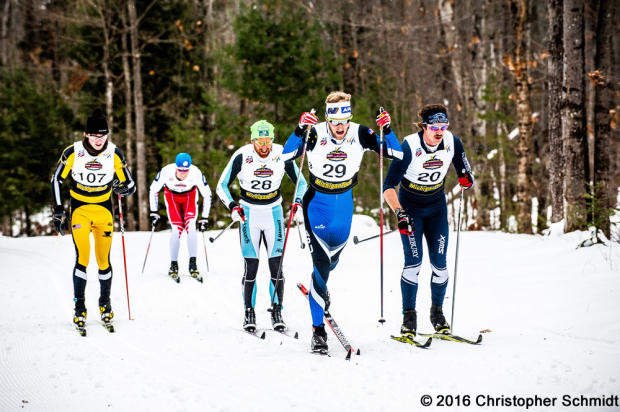
ST: Describe what happened in this horrific accident and the impact that it had on your training.
EP: I was doing a mountain run with my teammates, I had a slight slip at just the wrong spot, then all of a sudden I was in free-fall. I dropped straight down 15 feet, then tumbled head over heels another 60 feet or so through this jagged boulder field. It was terrifying.
In terms of my actual injuries, I was incredibly fortunate for as bad as the fall was, I somehow managed to not break any bones, which still amazes me to this day. Don't get me wrong though, it was still bad. I had bruises over my entire body and I felt like I had been hit by a bus. I think the hardest part was the mental side though, as the whole thing was so sudden and so unexpected. In a split second, I went from being a top level athlete to barely being able to get out of bed. The whole thing really scared me. It wasn't necessarily what actually happened, as much as what could have happened. The doctors told me that at the speed I was traveling if I had hit my head, I easily could have been killed. What's crazy is my teammate Scott Patterson took a photo of my teammate PK Kovacs and I literally two minutes before the fall happened, When you see the photo, it is a very vivid illustration of just how unforgiving that terrain is in the Chugach Mountain Range where we were running.
I was so banged up that I stayed home for a week with no training. Once I got the clearance from my doctor and PT to resume light activity, all I could do were easy walks. Even once I got to return to somewhat normal training, the first few workouts back were very hard on me, both mentally and physically. It hadn't really been all that long since I was healthy, so it was still fresh in my mind how I should feel training, but I was just so far from away that, it was very hard to deal with. Not only was it very frightening how close I came to getting killed, but it was such a striking example how quickly you can lose everything.
I read the excellent interview you did with Tad Elliott about his struggles with illness and my situation is interesting because on one hand it is very similar but on the other hand, it is very different. In reality, mine was really more of a close call and the biggest impact was the mental side. Tad's situation was long and drawn-out, but mine was very sudden and completely unexpected. So while I was very sore and completely out of commission for a few weeks, Tad's situation played out over the course of several months or even years. What we most certainly have in common though is the changed perspective that these events brought on. I can't speak for Tad, but I know in the end this accident actually ended up helping me.
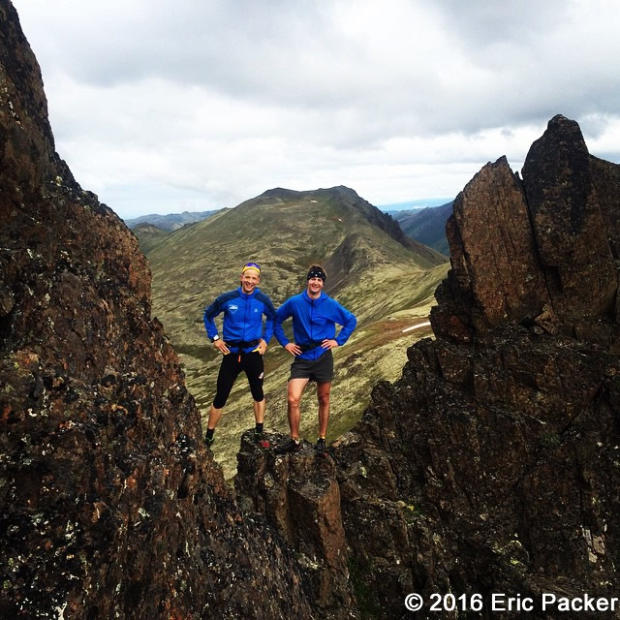
ST: One of the foci of this column is the role of adversity in success, as this is something that cross boundaries in all aspects of life. I don't think there is any top level athlete that hasn't had to come back from some type of set-back, so describe how you were not only able to overcome this, but also how it actually helped lead you to national championship.
EP: Great question. I've thought about this a lot, as it is quite counter-intuitive that something like falling out a cliff could make you faster, but that's exactly what happened. I got super lucky in that there was no lasting damage from my accident, but on the flip side I came very close to life-altering injury or worse. The whole time I wasn't able to train there was certainly some anxiety about missing workouts, but overall I felt lucky – lucky that I survived and lucky that I still had the opportunity to ski race. Once I could get back to normal training, instead of feeling like I had to go out training, I now felt incredibly fortunate just to be able to go outside to do anything. Training became a privilege not a chore and I ended up having the best late summer/fall training of my career. In the end, that crazy accident helped me develop that little bit of extra motivation that I needed to take me to the next level.
I'm glad you brought this up too, as this phenomena is more common that you might think. My Alaska Pacific University (Ed note, APU is not a college program, rather an elite training center in Anchorage, Alaska) teammate Scott Patterson was on that ill-fated run with me and he too had a similar experience last year. He was impaled by a ski in a freak accident and developed a pulmonary embolism. His injury was far more serious than mine also could have died. Scott also won a national championship this year in Houghton, with his win coming in the 15k classic race. One of Kikkan's (Randall) best seasons (Ed note: Rangall also skis for APU) was preceded by her spending most of the summer in a walking boot due to a serious foot injury, yet that proved to be a breakthrough year for her too. What I went through is actually very insignificant compared to what each of them went through, but I think the common thread is that dealing with adversity helps you reach success.
ST: Crash or no crash, what would you say was the most significant contributing factor to your win?
EP: That's easy. My team.
I'm super lucky to be on the Alaska Pacific University ski team. I know I wouldn't be where I am today if it wasn't for this team. It is an amazing program. The coach, Eric Flora, was USOC coach of the year and that's across all sports, not just skiing. If you trust your coach like all of us here at APU do, you don't have to worry about your training. Our PT, Zuzana Rodgers, is also amazing. Thanks to her, I was able to get back from my accident much sooner than I thought was possible. The entire leadership group up here is so good that there is not too much more you could ask for as an athlete.
The training group is also unsurpassed. We all grew up together and began butting heads over 10 years ago in the local junior races. About two years ago we started getting everyone back together and the impact has been enormous. There is a commitment to group success that you don't find a lot of other places. Choosing a path like triathlon or Nordic skiing can be a lonely lifestyle, but when you have such a supportive team environment, it becomes a very fun journey.
Since we've know each other for so long, we've all had lots of ups and downs together and everyone really respects each other. We've all beaten each other in races, so everyone is well aware of that fine line between success and disappointment and how quickly the tables can turn on anyone. As a result, as a team we are not focused on the individuals, but rather on trying to move the whole group forward in a way that we haven't yet seen in men's skiing in the US.
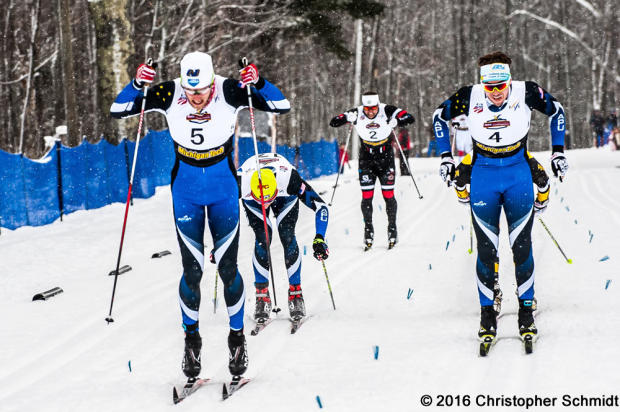
ST: In a way it is ironic that your accident happened running, as one of the central themes of this column is how good Nordic skiing is for triathlon training and vice versa. Tell us a little bit about how you train for skiing in the off-season and how you think Nordic skiing can help triathletes
EP: One of my big goals this past off-season was to improve my running, as running is a very effective way to build your fitness base. As a result, running is very good for skiing and I believe that it carries over very well to both skate and classic technique. Going the other way, I think skate skiing is perfect winter training for cyclists as it has a lot of static loading of the muscles, while classic is best to improve your running. Triathletes should also keep in mind that both skate and classic are weight bearing but non-impact, so both are a perfect way to increase your training volume without a greatly increased chance of injury. And skiing is fun. I read your first article in this series and I couldn't agree with your conclusions more – skiing is safe (very few cliffs on the tracks), warm, fun and overall excellent preparation for triathlon.
ST: Let me ask you the same question I asked Tad Elliott, as it is such a relevant one to some many athletes: The vast majority of Slowtwitch readers are age-group triathletes, runners, Nordic skiers or other aerobic athletes, many of whom have also had to do with illness and injury – what advice do you have for those in the process of working through this right now?
EP: The biggest piece of advice I can offer is to get qualified, objective advice right away. Being injured is incredibly frustrating and this makes it very hard to look at yourself analytically. A good coach, doctor or PT is both knowledgeable and objective. Injured athletes are usually neither of those things.
Every athlete should build a relationship with a coach, physical therapist and a doctor who really care about them and most importantly, understand them as both a person and as an athlete. When you're injured, recovery is all about managing both the short-term and the long-term, so you need people who have perspective on both. I was intrigued when I read that Tad's doctors and coaches started him back by sending him on short walks, as that is exactly what my team did for me. Would they give this same advice to a sedentary person? Maybe not, as that person might be content to just rest, but doing nothing would drive me crazy. Instructing an athlete to just sit still all day is probably some of the worst advice possible, so having people who understand this and are smart enough to prescribe an activity as safe and low-risk as walking is key.
What's interesting too is the advice from the medical team can go both ways too: sure, they will often say, "take it easy, rest, recover, etc.," but I've also had the opposite experience in which the issue I was dealing with I thought was serious, but the PT told me I could and should muscle through it. If I had been on my own, I would have lost valuable training time from an injury that wasn't nearly as serious as I thought it was. Sometimes it is okay to train though pain, the key is knowing when this is a good idea and when it's bad one, and you need to help to do this.

ST: As a newly crowned national champion, what advice do you have everyone out there on their own journey, whether it is skiing, triathlon or any other endurance activity?
EP: The cool thing about endurance sport is that you get to choose your own destiny. It is really about the work that you do and how smart you are about recovery. When I first got started racing at a high level, this was hard for me to grasp. If I had a bad race, I'd blame my genetics, my skis and things I couldn't control. But as soon I realized that I just wasn't working as hard as others, that changed everything. It's really about the work you put in. Once you understand and accept that you control your success, anything is possible.
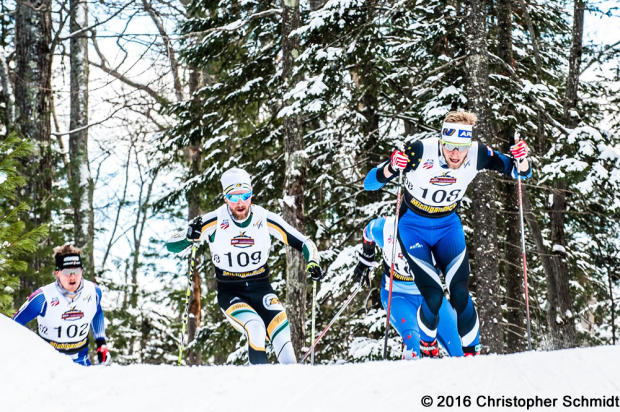
ST: You've had quite an eventful year. What is the most significant thing you learned?
EP: Take everything that comes at you, deal with it and no matter what, do not let the little things get to you. Everyone has to deal with adversity, what matters is how you respond.
Two days before my win in Houghton, I raced in the 30k that Tad won. I needed to get something like 10th place or better to qualify for a starting spot on the World Cup. This was a big goal for me and not only did I not do it, I wasn't even close. To make matters worse, I got gapped off of the lead group at about 7k in, so I just dangled in no-mans-land for about 20k or so, knowing that I was missing this major goal. Earlier in my career, this would have stuck with me for a while and certainly ruined the rest of my races at Nationals, but as a result of my accident, some great coaching from Flora and me figuring some stuff out on my own, I've learned to let things like this go quickly. So once that race was over, I only focused on what I could control: rest, recovery, good food, etc. I simply let the bad race go, moved on and prepared for the next race, and ended up winning for my first national championship.


